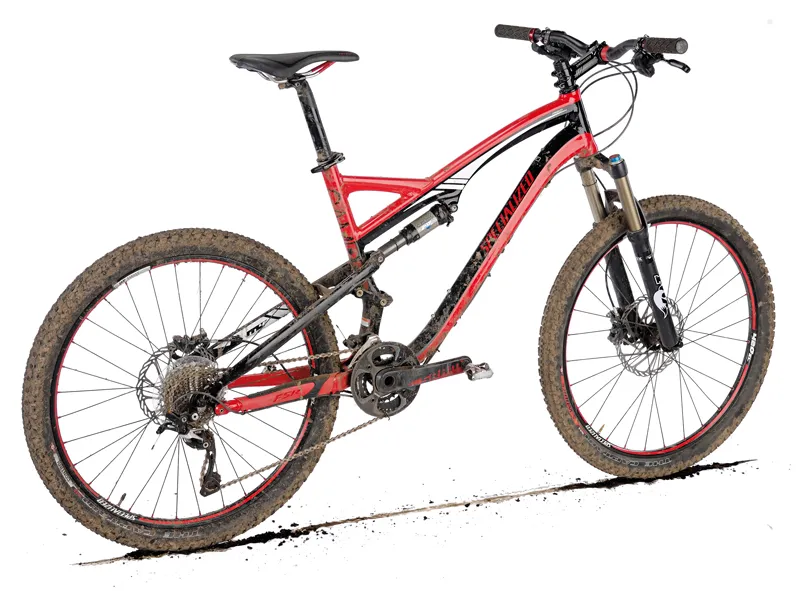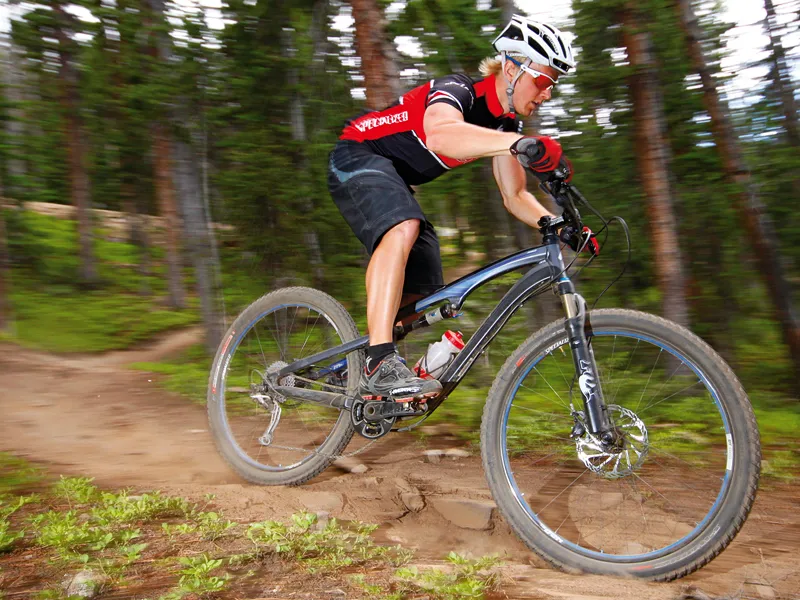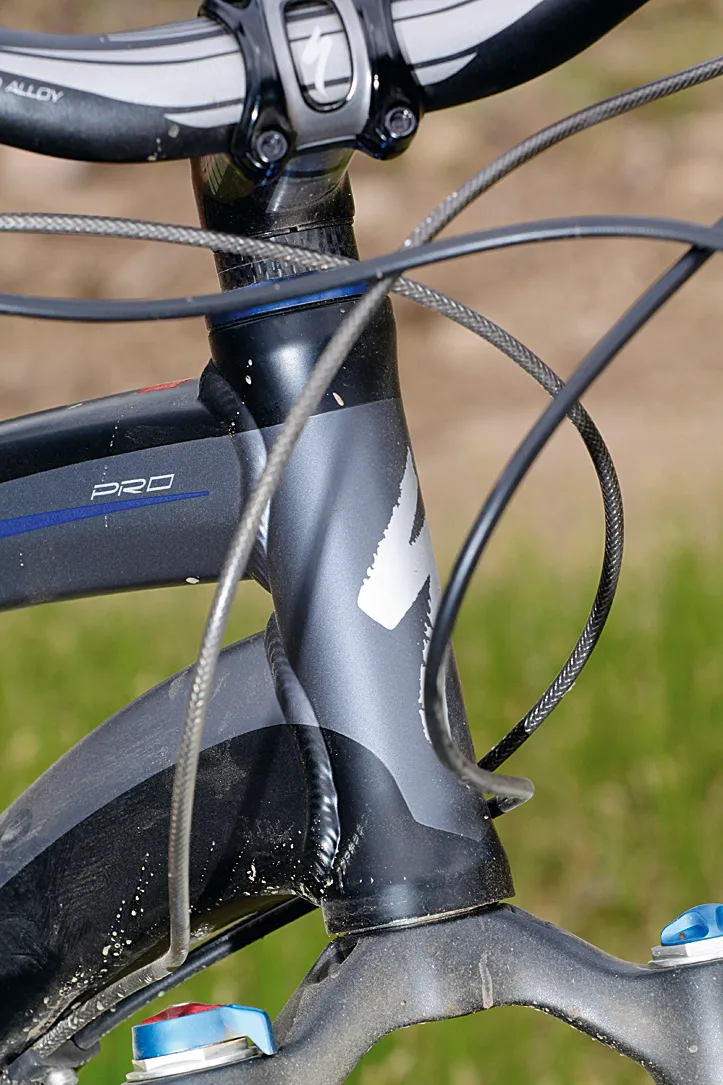Specialized increased their ever-popular Stumpjumper FSR to 140mm of suspension travel for 2010 and, while travel doesn’t necessarily define a bike, it was a shift that was widely perceived as taking the FSR into a more hardcore riding category than cross-country trail riding.
The company also had their 120mm FSR XC bikes, but that range was always designed to be a budget line-up rather than a shorter-travel alternative. Which brings us to 2011 and the all-new Camber range. Specialized’s pitch for the Camber is “everything you need, nothing you don’t” – it’s intended as a gimmick-free all-rounder for riders who don’t feel the need for stacks of travel.
At £2,199, the Camber Pro is the top of the range. At that price, it overlaps the lower end of the Stumpjumper FSR line, making the decision to go Camber or Stumpy a direct choice for trail riders. We suspect that many riders have been waiting for a bike like this. It's a decent weight at under 27lb and delivers a lively yet confident ride. Much like Trek’s Fuel EX, it impresses simply by tackling trails that, on paper, it ought to be more challenged by.
It’s not that the suspension feels like there’s more travel than there actually is, it’s mainly the sorted handling of the Camber that makes a difference. Even when the fork and back end are clearly getting out of their depth, the bike still manages to hold its line. You’re certainly likely to find yourself thinking long and hard about how much travel you actually need.
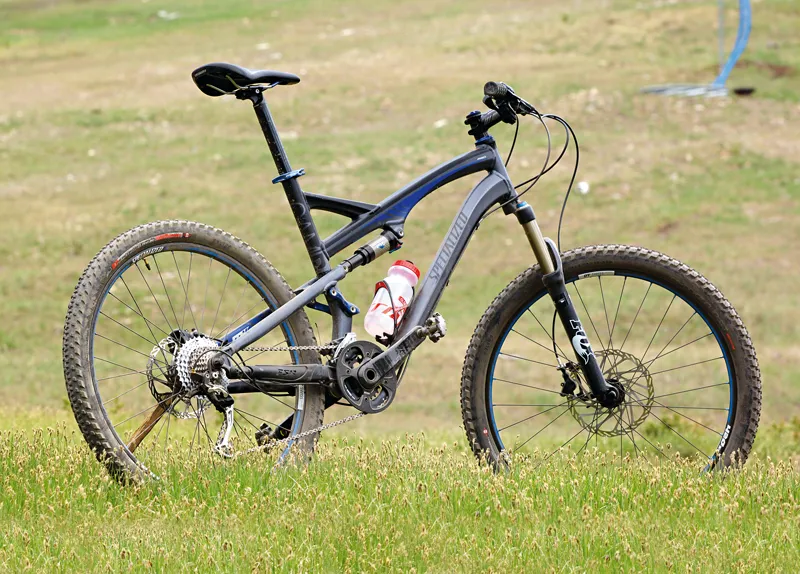
Ride & handling: Lively, confident and cleans lines you'd expect a 120mm bike to struggle over
The Camber is a perfect example of how a bike’s capability is dictated at least as much by its shape as by its travel. While it's 20mm shy on travel compared with its Stumpjumper FSR brother, the Camber’s user-friendly geometry means it’ll carry you through rough terrain that you might have expected to need more bounce for.
In some respects we prefer the shorter-travel platform. We’re happy to live without the Brain inertia valve on the shock that you’ll find on posher Stumpjumpers, and the Camber has a slightly tauter feel that encourages you to make more of the trail than just battering across it (although that approach works surprisingly well too).
If you’re used to a 3x9 transmission setup, the Camber Pro’s 2x10 front chainring configuration takes a little getting used to. There’s plenty of range there, with the 24/36T low being a whisker lower than the usual 22/32T, and the 38/11T high really only feeling lacking on roads. The jump between chainrings is bigger than a typical triple, although the actual shifts are smooth enough – we’ve never been particularly impressed by mid-range SRAM front mechs, but only having two rings to deal with gives the X7 derailleur an easy life.
The suspension is characteristically vice-free – there are no weird idiosyncrasies so you can give your full attention to riding. It’s got a robust feel (although we’d love to see a through-axle fork) and, unless you go completely bonkers, never gives the impression that you’re asking too much of it. The Camber Pro could bear meatier tyres, though – while the 2.0in Captain treads are decent enough and roll easily, there’s not a great deal of volume there. There’s definitely space in the frame, plus the geometry and suspension performance, to use bigger tyres.
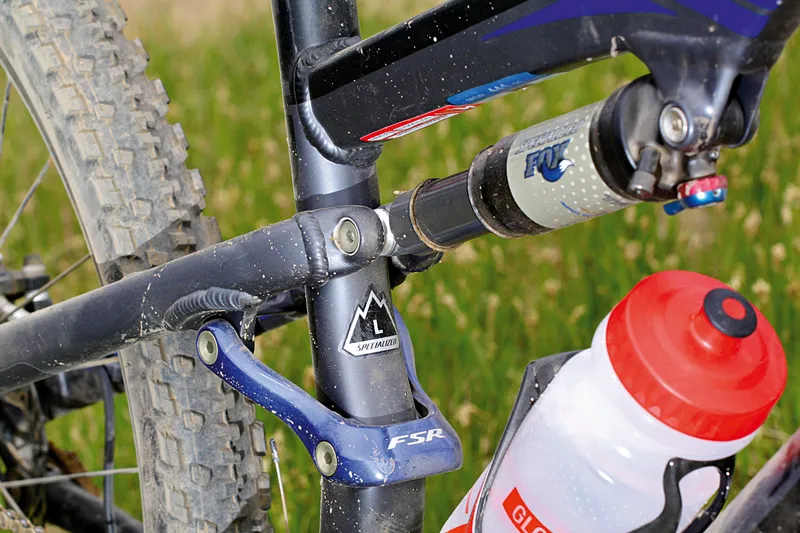
Frame: Hydroformed chassis which takes design cues from its bigger brother
The Camber’s family resemblance to the Stumpjumper is pretty clear. Specialized have been moving most of their suspension bikes across to the in-line shock design, where the shock is aligned with the seatstays. On the Camber, the shock is driven directly from the end of the seatstays, with a one-piece forged linkage connecting the stays to the seat tube to keep everything in line.
You won’t find any carbon fibre here, with the Camber frame using Specialized’s M4 aluminium throughout. Inevitably, there’s lots of hydroforming going on to save weight, and the pivots on the seat tube are hydroformed rather than being separate forged pieces welded on to simplify manufacture. Up front, there’s an oversized head tube for an integrated headset.
Both gear cables and the rear brake hose are routed under the bottom bracket, with continuous housing runs secured by bolt-on cradles. There are also guides along the top tube for a remote adjustable seat post, should you wish to fit one. You get one set of bottle bosses inside the main triangle, although it’s a bit of a squeeze to get a 750ml bottle past the shock on any frame smaller than the large.
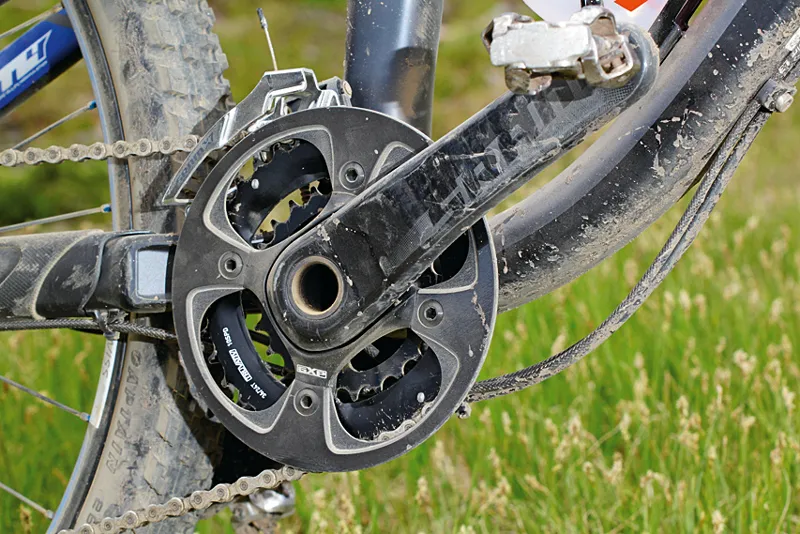
Equipment: Well thought out spec, with carbon cranks and other big name kit
For the money, the spec is impressive. The SRAM carbon fibre cranks and Shimano XTR Shadow rear mech grab attention, but Specialized haven’t cut any obvious corners to include them – most of the rest of the transmission is Shimano SLX, while Avid Elixir R SL brakes do the stopping. The unique-to-Specialized Fox Triad shock that’s been around in various forms for years puts in an appearance, with a three-way lever for fully open, ProPedal or locked out settings.
There’s also a lockout on the Fox F120RL fork, although you’ll have to make do with conventional quick release dropouts. There are some subtle details among the component choices that show that someone has really thought about this bike. While you don’t get a through-axle fork, the front hub features a DT RWS screw-through axle and oversized end caps that increase the area of the hub/drop-out interface to boost stiffness.
While both ends feature 2.0in Captain tyres, the one at the front is a supple, lightweight, high thread count S-Works model while the rear is the Control version with a beefed-up casing, on the grounds that rear tyres tend to take more stick than front ones. We also appreciate the bigger brake rotors on larger bikes – the L and XL frames get a 203/185mm combo, compared with the 185/160mm combo on S and M frames.
Tester says...
Mike Davis: "It's good to see Specialized re-entering the 120mm trail bike fray with the Camber – the Stumpy FSR is a good bike, but for many riders it's too much. Taking the Stumpy's trail-friendly geometry and mixing it with a simple, lightweight, shorter-travel chassis is a great move, and the result will prove stout competition."
